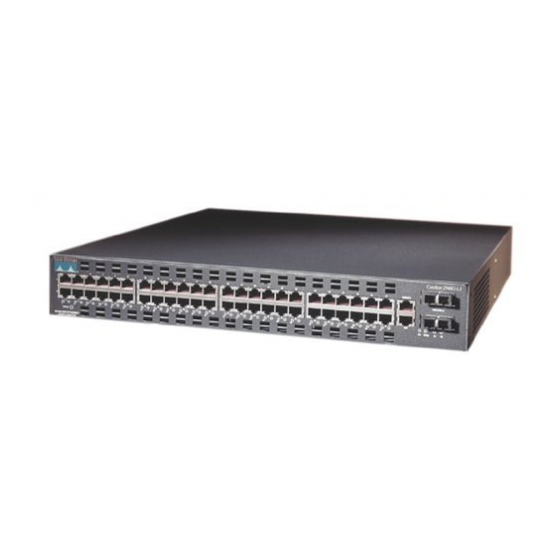
Cisco WS-C4003 - Catalyst 4000 Chassis Switch Manuals
Manuals and User Guides for Cisco WS-C4003 - Catalyst 4000 Chassis Switch. We have 1 Cisco WS-C4003 - Catalyst 4000 Chassis Switch manual available for free PDF download: Software Configuration Manual
Cisco WS-C4003 - Catalyst 4000 Chassis Switch Software Configuration Manual (510 pages)
Software Guide
Table of Contents
-
-
-
-
-
-
-
-
-
PVST+ Mode108
-
MISTP Mode108
-
MISTP-PVST+ Mode108
-
-
Using PVST109
-
-
-
VTP Domain154
-
VTP Modes154
-
VTP Version 2155
-
VTP Pruning155
-
Configuring VTP157
-
-
-
Deleting a VLAN169
-
-
-
-
Configuring GVRP212
-
Configuring Qos
223 -
-
Qos Terminology224
-
Configuring Qos226
-
Disabling Qos229
-
-
-
Configuring CGMP234
-
Enabling CGMP234
-
Disabling CGMP238
-
Configuring GMRP238
-
-
-
Using Telnet275
-
Using Ping278
-
-
Configuring UDLD297
-
-
SNMP Terminology303
-
-
Benefits309
-
SNMP Entity309
-
Dispatcher310
-
Applications311
-
-
-
-
-
-
SPAN Session321
-
Destination Port322
-
Source Port322
-
Reflector Port323
-
Ingress SPAN323
-
Egress SPAN323
-
-
Vspan
323-
Configuring SPAN324
-
SPAN Traffic324
-
Configuring SPAN326
-
-
-
-
-
Power Management349
-
-
-
-
-
-
Frames397
-
Layer Packets398
-
-
-
-
-
-
-
Configuring NTP476
-
Disabling NTP482
-
Appendix
483 -
A Acronyms
485 -
I N D E X
495
Advertisement
